Interim report on a wreck survey on Süderoogsand
As a consequence of the storm in late February 2022 two wooden wrecks on Süderoogsand were unearthed, which were reported by the ranger of the Wadden Sea National Park – Holger Spreer-Wree – to the State Archaeology Department of Schleswig-Holstein (ALSH). The wreck positions were already known, but there was hardly anything to see of the wrecks, as initially only a few frames were protruding from the sediment. After the first wreck already documented in spring 2020 (Süderoogsand 1 wreck), there are now three unidentified wooden wrecks in total.
Experience shows that wreck sites in the Wadden Sea are subject to strong changes due to erosion, tidal currents and storms, so timely documentation is of great importance. Within a few weeks or months, wreck sites can be covered by sediment again. The far greater problem, however, is the constant process of decay, as parts of the wreck become detached from the structure and are carried away by the tidal currents.
On the first weekend in March, the wind and weather conditions were optimal for investigating the wreck sites. The wrecks were examined by me on behalf of the ALSH, logistically and organisationally supported by Holger, whose local knowledge was invaluable. The trip was accompanied by photographer Martin Hain, who was also able to take footage from the air. Since the Süderoogsand is situated in protection zone 1 of the Wadden Sea National Park and rare seabirds can be found here, the drone survey could only take place with special permission.

To make the most of the tidal window, the team cast off at around 4 a.m. on the 6th of March and headed for the south-western shore of the Süderoogsand in Holger’s workboat, dropping the anchor an hour later. With the dinghy, we set off and entered a tideway in almost total darkness. The first stop was an as yet unknown wooden wreck (Süderoogsand 2 wreck) in the immediate vicinity of the wreck of the Spanish barque ULPIANO of 1870. With the tide still receding, the imposing wreck, which was over 25 m long, came free in the morning light. The keel, many frames, floor-timbers and sitters, parts of the planking and the rigging were observable. Both the stempost and the sternpost had become loose and were lying next to the wreck. It also appeared that a part of the port side of the ship had come loose and had drifted about 10 m to the south.
Some important details could be observed, such as the rabett where the hood-ends of the planks were fastened into the stempost almost at right angles; an indication of a heavily rounded hull. Such plump hull shapes were characteristic for flat-bottomed seagoing vessels such as smacks, koffs and galiots and were typical of the Wadden Sea, as they could easily fall dry at low tide.

However, it seems doubtful whether it was a local ship. The dendrochronological analysis remained inconclusive and only one plank could be dated to around/after 1786. The wood species of one plank was identified as a specific type of elm (probably ulmus alata = winged elm), which is native to North America. The informative value of a single result such as this is limited, however, as wood was also traded and recycled internationally. The practise to re-used planks from older vessels also puts a questionmark on the provisional date. If however the late 18th century is corroborated for this wreck through additional analysis, a wreck from young United States shortly after the time of the American War of Independence on the coast of Schleswig-Holstein would be a sensation. Further research is required. In particular, a comparison with ship strandings documented in archives could provide further information about the identity of the ship and the fate of its crew.
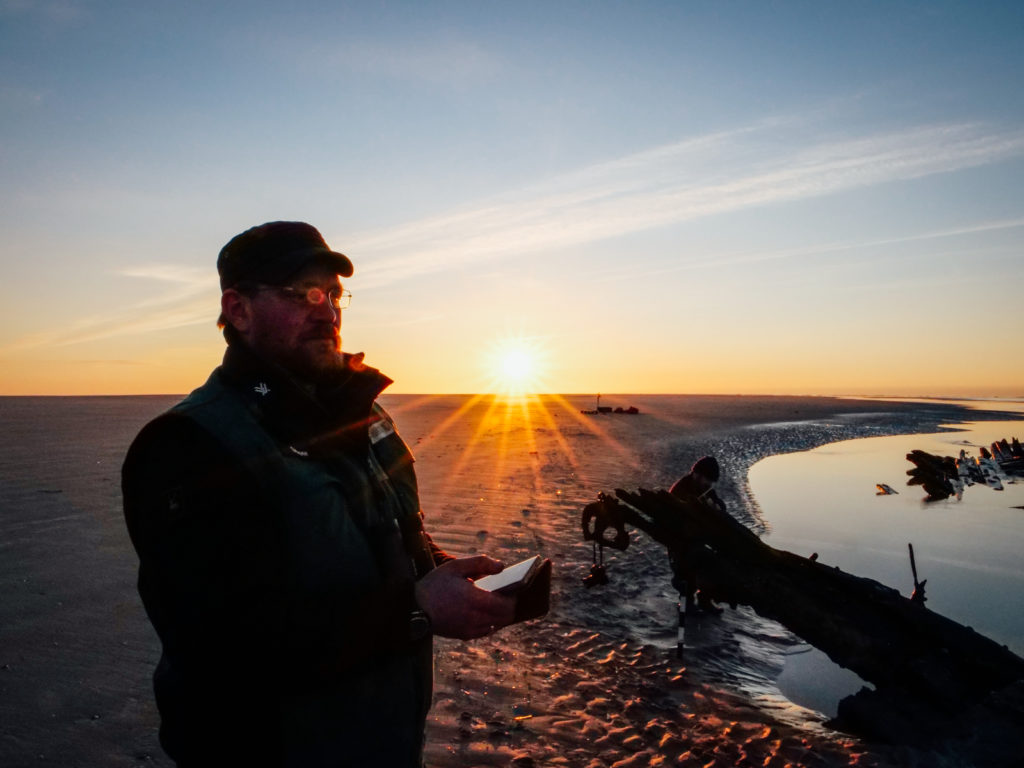

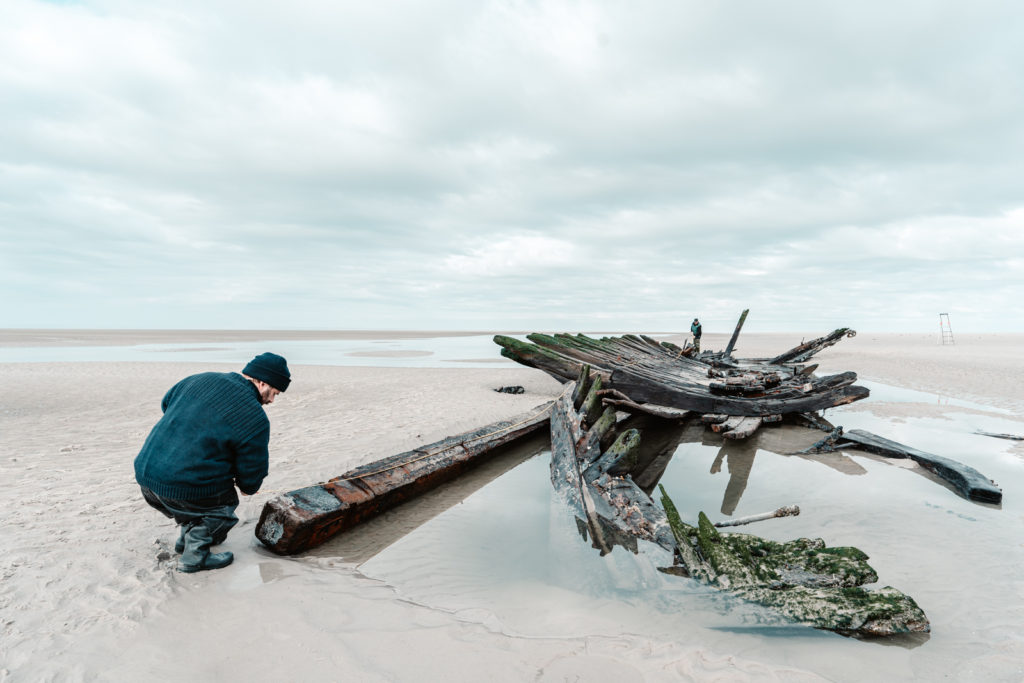
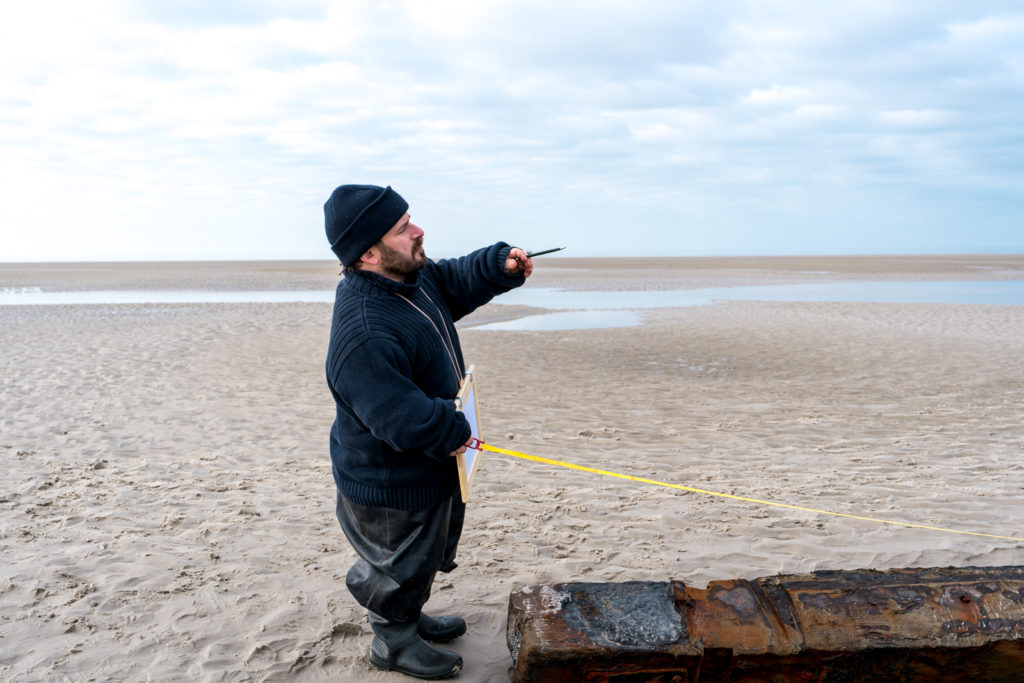
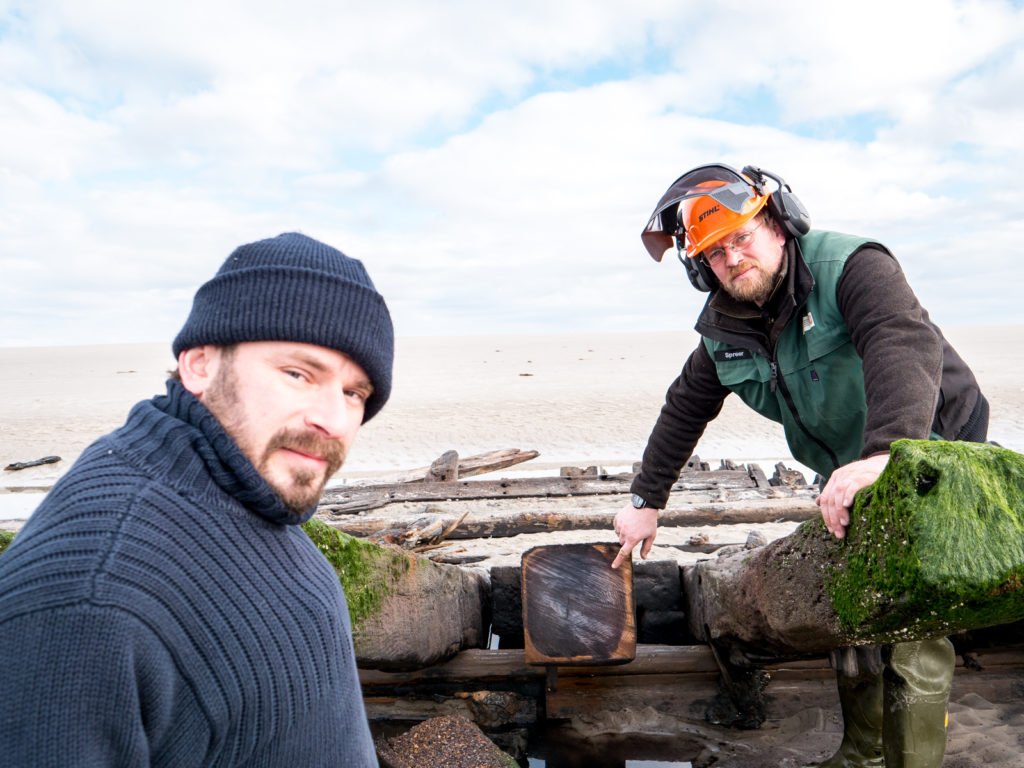

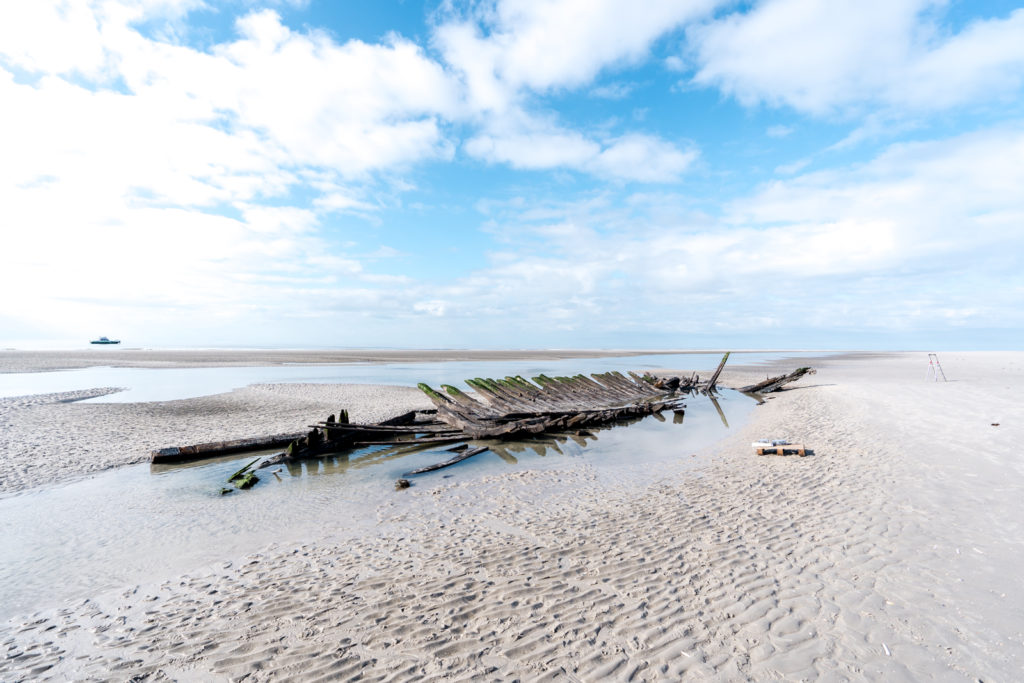
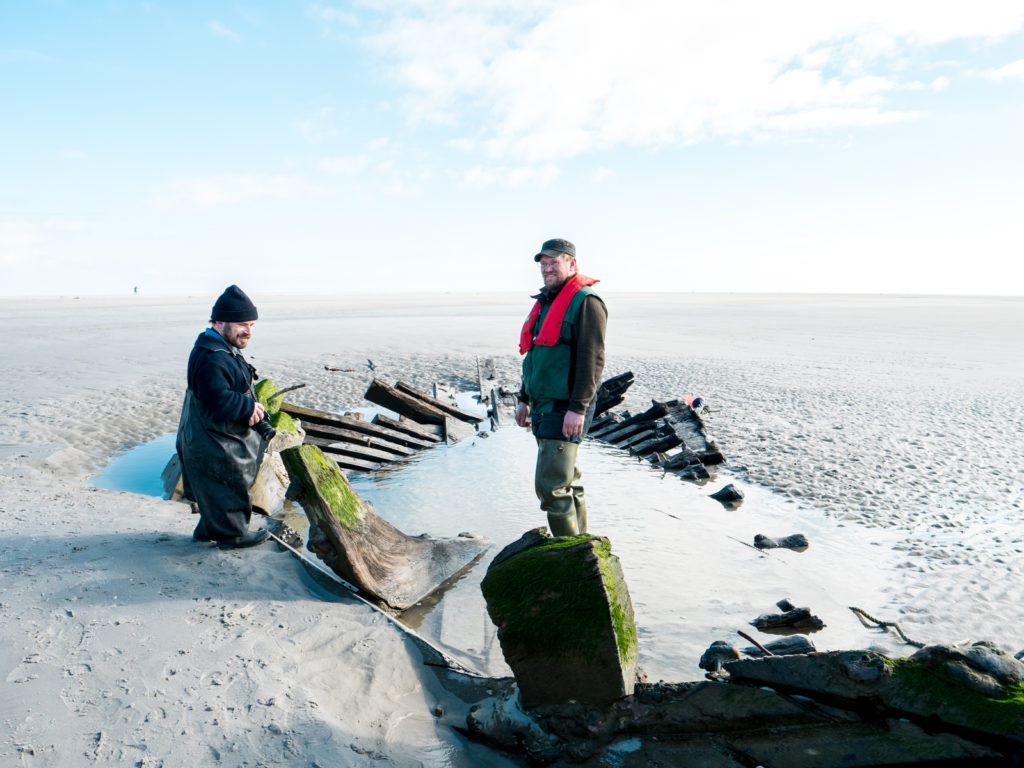
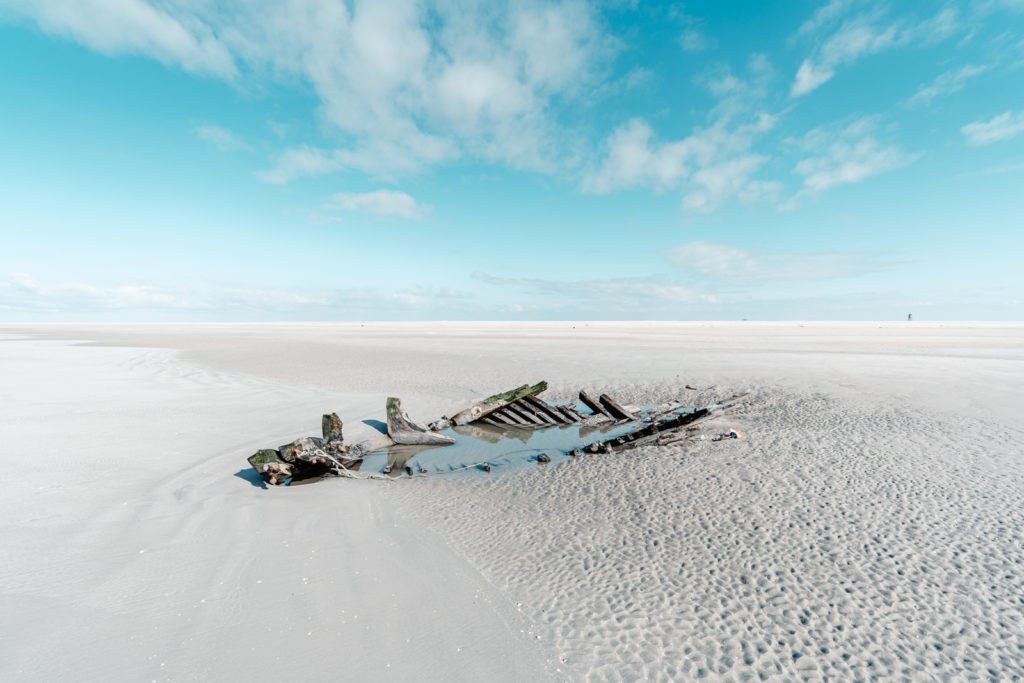
The wreck of the Spanish barque ULPIANO, which stranded on Christmas Eve 1870 only about a hundred metres to the south, could also be inspected. Since its discovery at the end of 2012, the wreck had been subject to a steady process of decay. The forecastle and the stern were found as two separate parts of the wreck in the scour.
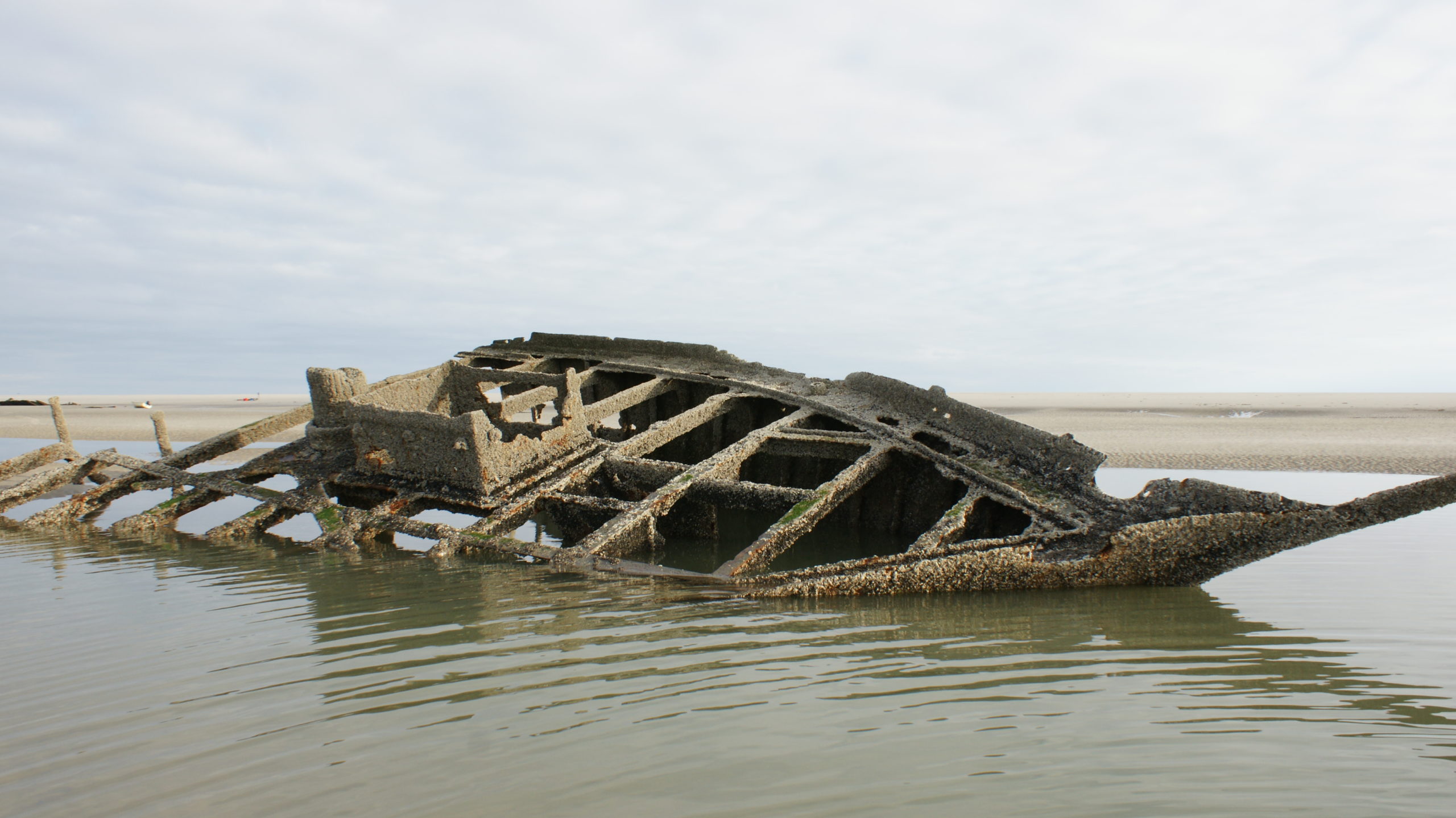
The second wooden wreck (Süderoogsand 3 wreck) that had been cleared of the sediment cover could just be inspected at the last moment with the incoming tide. Strictly speaking, this is at least two pieces of wreckage that have not yet been dated and identified. There are traces of both burn-marks and scrapping.

It is planned to carry out further research within the framework of a project entitled “Frühneuzeitliche Strandungen und Schiffswracks in der Tidenzone: Bedrohte Zeugnisse des maritimen Kulturerbes an Schleswig-Holsteins Nordseeküste im Spiegel von Küstenerosion und Meeresspiegelanstieg” (“Early modern strandings and shipwrecks in the intertidal zone: Schleswig-Holstein’s endangered maritime cultural heritage in the light of coastal erosion and sea level rise”), which will be submitted in due course on behalf of the ALSH in cooperation with the History Department of the University of Kiel and the Institute of Oceanography at the University of Hamburg. Raising third-party funding for researching these relics of the maritime cultural heritage is of elementary importance, as archaeological investigations carried out by ALSH can only be financed through the polluter-pays principle. Since wrecks in the intertidal zone are uncovered by the forces of nature and not by humans, wrecks can currently only be documented through a great deal of improvisation and voluntary work.

Overview map: The post-medieval wrecks known so far on Schleswig-Holstein’s North Sea coast are concentrated on the outer sands of the North Frisian Wadden Sea. The points shown here only represent the known sites, which in the best case have been archaeologically investigated and published and in the worst case have only found their way into the archaeological register as a laconic note. The number of unreported wreck sites, which either remained undiscovered or were not reported, is probably much higher. The first archaeologically investigated wrecks from the Wadden Sea area both came from dike breaches, namely a wreck discovered in 1969 at Hedwigenkoog and a wreck discovered in 1994 near Uelvesbüll (the latter wreck is now exhibited in the North Frisian Maritime Museum in Husum). One of the two newly discovered wrecks on Süderoogsand was already reported by Holger Spreer-Wree in 2020, of which initially only the frames protruded from the sediment (shown here as Süderoogsand wreck 2) (© Dr. Daniel Zwick)
Further reading:
Zwick (forthcoming): D. Zwick, The Management of Intertidal Shipwrecks in Germany. In: J. E. Jones, C. H. Mires, D. Zwick (Hrsg.), The Intertidal Shipwreck: Management of a Historic Resource in an Unmanageable Environment. Gainesville: University Press Florida.
Zwick 2022: D. Zwick, Im Mahlstrom der Geschichte: Schiffswracks, Wrackteile und Strandgut im Nordfriesischen Wattenmeer. In: Skyllis 22, 2022, 174-186.
Zwick 2022: D. Zwick, Schiffswracks im schleswig-holsteinischen Wattenmeer: Zum Stand der aktuellen Forschung. In: Arkæologi i Slesvig / Archäologie in Schleswig 19, 2022, 207-222.
Zwick 2022: D. Zwick, Die Wracklandschaft vom Süderoogsand. In: Archäologische Nachrichten aus Schleswig-Holstein 28, 2022, 98-107 [mit interaktiven Special Feature: 3D-Rekonstruktion] .
Zwick 2021: D. Zwick, Archäologie in der Tidenzone – Die neuen Wrackfunde aus dem Nordfriesischen Wattenmeer. In: F. Huber (Hrsg.), Zeitreisen unter Wasser. Spektakuläre Entdeckungen zwischen Ostsee und Bodensee. Darmstadt 2021, S. 130-143.
Zwick 2021: D. Zwick, A late 17th-century ‘Double Dutch’ construction in the North Frisian Wadden Sea: The case of the Hörnum Odde wreck on the Island of Sylt, Germany. In G. Boetto, P. Pomey, P. Poveda (Hrsg.), Open Sea … Closed Sea. Local and inter-regional traditions in shipbuilding. Proceedings of the 15th International Symposium on Boat & Ship Archaeology, Marseille 22-27 October 2018. Paris, S. 203-209.
International shipwreck database of the Dutch cultural heritage agency in which also some of the aforementioned wrecks from Schleswig-Holstein are included: https://mass.cultureelerfgoed.nl/
Media response:
23.01.2023 | Kieler Nachrichten: Auf Wracksuche im Wattenmeer – Schiffsarchäologe Daniel Zwick berichtet von seinem Alltag. Zusammenarbeit mit Historikern der Kieler Uni geplant (PDF-copy).
9.4.2022 | Der SPIEGEL: Zeitreise im Watt (PDF-copy).
18.3.2022 | National Geographic: Historisches Schiffswrack in der Nordsee gefunden (Link).
12.3.2022 | NDR: Schiffswracks vor Hallig Süderoog freigespült.



